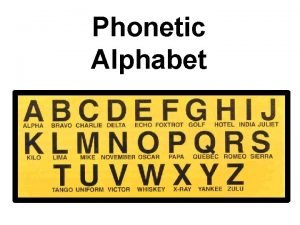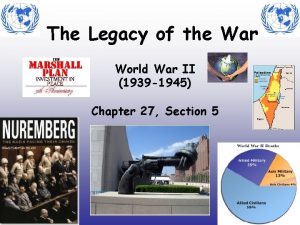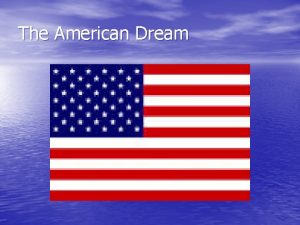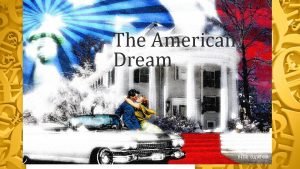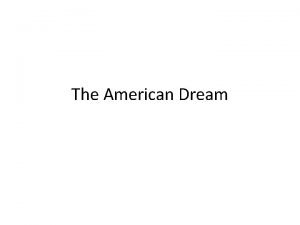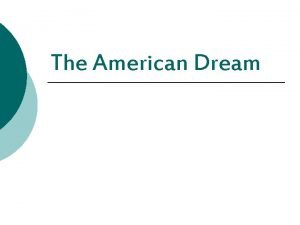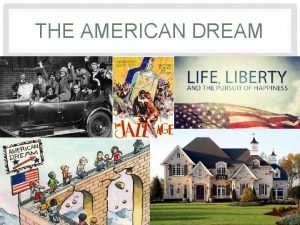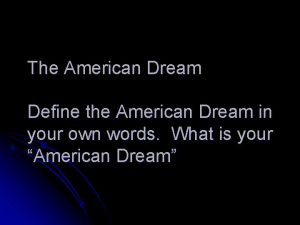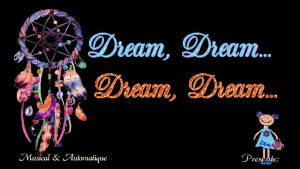The 1950 s Living the American Dream WWII









- Slides: 9

The 1950 s Living the American Dream • WWII ended in 1945. By the summer of 1946, over 10 million American men and women had been released from the military. • To help this period of adjustment the government had Passed the G. I. Bill of Rights in 1944 to benefit veterans in three ways. 1) Payed for almost all of their college tuition if they chose to go back to school. 2) Provided up to 1 year of unemployment benefits while in school or looking for a job. 3) Provided loans at very low interest rates, which would allow them to buy homes, farms, or start a business.

The Baby Boom Era • • When these millions of Americans came home, babies soon followed. The years from the late 1940 s through the early 1960 s are called the Baby Boom Era And all people born in this era are still known as Baby Boomers, me included. At the height of the era, 1957, over 4. 3 million babies were born, or 1 baby every 7 seconds, making it the largest generation in our countries history.

How Did The Baby Boom Era Affect Society? • Where did most of these growing families live? 85% of all new neighborhoods built in the 1950 s and early 1960 s were built in suburbs, neighborhoods built just outside city limits. What made this more possible? New roads, cheaper cars and cheaper gas.

The Baby Boom Effect • As suburbs were built, schools followed. • Then restaurants, fast food, parks, malls, churches. • Full service gas stations, movie theaters, drive-in theaters were all common.

Mc. Donald’s • A common business strategy that grew in the suburbs was the practice of selling Franchises. • This happens when a company sells the rights for someone to sell similar products in many locations but still using the parent company name and logo. • Best example is when the Mc. Donald brothers in California developed an assembly line system to make simple hamburgers, fries, soft drinks and milkshakes. • This was drive up and take out service only at the start. • Ray Kroc bought the franchise from them in 1955 for $2. 7 million and opened the first Mc. Donald’s in Illinois and establish the famous Golden Arches it is known for today.

Children & Medicine • In the 1950 s, Dr. Jonas Salk invented a vaccine to cure Polio, a disease the killed or crippled over 58, 000 children in one year, 1952. • It was first given by needle until 1974, when Dr. Albert Sabin developed an oral vaccine that is still administered today.

Women of the 1950 s • The traditional role for women has almost always been to stay at home and raise the children. • This continued through the mid to late 50 s especially with all the children being born. • It was even glorified with the popular TV Shows like Father Knows Best, Ozzie and Harriet, and Leave It To Beaver, all in black and white. • But women, many of whom worked during the war or even served in the military, increasingly became bored. • By 1960, almost 40% of the former stay at home moms became working moms, even with children.

1950 s Leisure Activities • With a higher standard of living, higher income, set 40 hour work week & more vacations, their was more leisure time and spending. • New appliances: washing machines, motor driven lawn mowers, dishwashers, dryers, allowed more time for leisure. • Playing and attending sports: a huge boom in professional baseball, football & basketball, especially with more televisions being bought. • People also read millions more books and magazines.

1950 s Leisure


